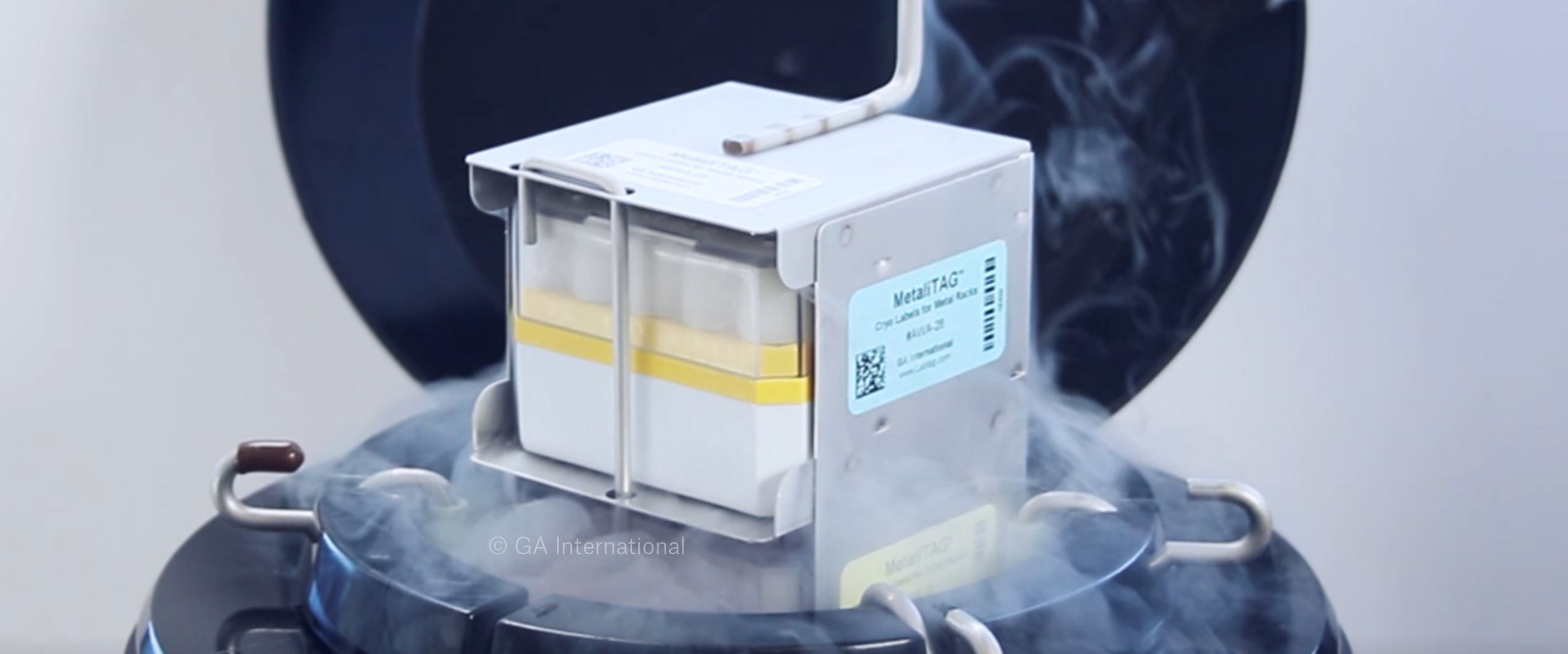 As any lab will attest, organizing your bank of cell lines is key to ensuring that your research runs smoothly and efficiently. However, this is easier said than done. How often do students and post-docs go searching for a specific cell line or passage number, only to discover that they cannot find what they’re looking for or that they’ve run out of the cells they need? Here are 4 simple ways that proper labeling can safeguard your lab against mismanaged cell line banking.
As any lab will attest, organizing your bank of cell lines is key to ensuring that your research runs smoothly and efficiently. However, this is easier said than done. How often do students and post-docs go searching for a specific cell line or passage number, only to discover that they cannot find what they’re looking for or that they’ve run out of the cells they need? Here are 4 simple ways that proper labeling can safeguard your lab against mismanaged cell line banking.
1 – Integrate your labels into a LIMS
Having the right laboratory information management system (LIMS) can streamline your workflow, making your lab run more efficiently and increase productively. A well implemented LIMS allows you to track every piece of information about a sample, including its source, identity, date of preparation, and where it is throughout the lab’s testing process. It can also track experimental results and schedule testing, perfect for record-keeping. For cell lines, integrating your tube, box, rack, and cell-freezing container labels into a LIMS can help manage your inventory by taking account of the identity of the cell lines, their passage numbers, the dates they were grown, and frozen on, and their location in the lab. It can coordinate when a particular cell line is needed for an experiment and how many tubes of each passage are required to maintain a continuous batch of cells for long-term use.
LIMS can also help organize your cell line storage efficiently. With a well-organized LIMS, you can prevent mixing your cell lines with other samples, such as protein or mRNA extracts, which makes it much harder to rapidly find the tube you’re looking for. Without clearly segregating your cell lines from the rest of your frozen samples, you also risk wasting hours searching through box after box, thawing both cell lines and lysates as you attempt to find a needle in a haystack.
2 – Label your tubes, boxes, & racks
This may seem like the most obvious step in maintaining cell line banks, but it is also the most crucial. Most cell lines are aliquoted and frozen in 2 ml vials at cryogenic temperatures (–196°C/–320.1°F) for long-term storage, either in freezers or in liquid nitrogen tanks. To help the cells survive cryogenic temperatures, they can be incubated with a cryoprotectant, such as DMSO, and frozen incrementally using cell-freezing containers (e.g. Mr. Frosty™) containing isopropanol, all of which helps prevent hazardous ice crystals from forming inside the cells. This requires labels for cryo vials, such as self-laminating wrap-around cryo labels, that can withstand extremely low temperatures and exposure to the cryoprotectant solution and/or isopropanol to prevent the label from falling off, smudging, or fading. Avoid hand-writing your labels, though this can be more convenient in the short-term, it can result in samples that can’t be identified either due to the illegibility of the writing, or smudging and fading of the ink.
Boxes and racks used to store cell lines should also be labeled appropriately to save time and avoid confusion. Cardboard and plastic cryo boxes should be labeled with cryo labels, while metal racks and canes used in freezers and liquid nitrogen Dewars can be labeled with either cryogenic labels specific for metallic surfaces or with hanging cryogenic tags.
Quick tip: all four sides and the top of your freezer boxes should be labeled in case they are inserted improperly into their racks.
3 – Use barcoded labels
To get the most out of your LIMS, pairing it with a method of generating barcoded labels is imperative. Labels can be printed on using one-dimensional (1D) or two-dimensional (2D) barcodes that can be read using a handheld scanner. Barcodes make it easier to track your cell lines and the information associated with them. For cell lines derived from patients, barcodes provide a means to condense large amounts of information on the vial while maintaining privacy and security. They are also extremely useful for transporting cell lines, as scanning a barcode can instantly verify that the appropriate contents were shipped and received.
Quick tip: the handle of the liquid nitrogen rack can be labeled with text and a barcode to identify its contents without having to remove it from the Dewar.
4 – Use RFID labels
Radio-frequency identification (RFID) uses chips that passively emit long-range waves, such as microwaves or radio waves. These chips can be integrated into labels, providing a scannable system of tracking cell lines. RFID is especially useful as you do not need to remove your tubes from the box to scan them, and it can scan the signals in bulk to deliver information regarding your entire cell line library all at once. This makes tracking your cell lines easy and convenient, as you won’t need to remove the boxes from their racks and risking thawing other cell lines and samples. Make sure to check out our RFID solutions page for more information.
Maintaining cell lines is one of the most critical jobs of any laboratory. Cell lines can be expensive, and mismanaging your stocks can lead to extended periods of inactivity, wasting time and resources as your staff either search for missing vials or discover at the last minute that cells need to be reacquired. Worse, the loss of an irreplaceable cell line could ruin years of work, as new results become unachievable and previous experiments become impossible to repeat. By using labels integrated with a dedicated LIMS system to identify your cells, you will:
- Improve the legibility of your tubes by printing labels instead of writing on them
- Minimize errors and sample loss due to inaccurate or mislabeled vials
- Reduce time spent searching for samples, preventing cells from being compromised due to thawing
- Improve organization and overall efficiency, ensuring you always know what’s in stock
LabTAG by GA International is a leading manufacturer of high-performance specialty labels and a supplier of identification solutions used in research and medical labs as well as healthcare institutions.




